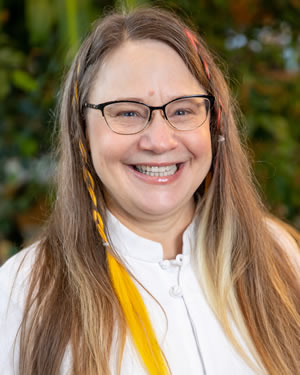
Our TuiNa Medical Acupressure Program is a 154 hour, 38 week program comprised of 9 excellent sections including Student Clinic experience.
Tui Na Massage, required for Chinese doctors to know, provides an in-depth knowledge of using specific hand techniques to effectively treat injuries and internal illness ranging from physical pain to side effects from chemotherapy. It can also be used to energetically balance general excess or deficiencies.
Tui Na appointments are usually 30 minutes in length and the client stays fully clothed. Not only is it a very convenient type of bodywork for clients to receive, the impact on the massage therapist in regards to time and supplies is minimal.
Course overview:
Tuina, translated literally as “push and grasp,” has been practiced by doctors in Chinese hospitals for more than 4,000 years dating back to the Shang Dynasty. Tuina uses Traditional Chinese Medicine as a basis for treatment. Concepts of Qi energy, blood circulation, and yin/yang play pivotal roles.
The system of Tuina Therapy uses vibrational hand techniques, stimulation of acupressure points, and passive range of movement to release constriction in the tissues, increase circulation, and balance energy flow allowing the body to heal itself naturally.
Tuina is a Chinese healing therapy that puts your mind and your body in a position to heal itself. Tuina is an awesome way to maintain optimal health as well as prevent disease. It can be used as a proactive health maintenance plan or as a responsive treatment to a current condition.
The goal is to harmonize the flow of energy throughout the body. Sometimes energy flow gets stuck; it’s your practitioner’s role to assess where the blockage is located and then to apply a variety of techniques to release tension, move energy along the body’s energy meridians, and set up a healing vibration. These techniques may include:
- Acupressure
- Stretching
- Range of Motion
- Traction
- Finger, Hand and Arm Roll techniques
- Grasping Techniques
The Tuina Experience
STEP 1. A HOLISTIC ASSESSMENT AND CONNECTION WITH THE CLIENT
To give you an optimal treatment, your practitioner needs a holistic understanding about you. So, the first step of every Tuina session will be a thorough interview and assessment of your body’s energy flow. The practitioner will be genuinely interested in how you characterize your energy level, your pain, and your emotions. Your practitioner will not only listen to your words, but also the tone and volume of your voice, she or he will observe your body language, the brightness in your eyes, and the expression on your face. Then your practitioner will simply place their hands on your body in stillness to attune with your energy.
STEP 2. GETTING THE QI
Your practitioner will set up a healing vibration that will bring qi energy all the way down to a cellular level. She or he will accomplish this by using round rubbing hand movements, ‘jostling’ – shaking movements that interrupt energy patterns and by applying light acupressure.
STEP 3. FOCUSING THERAPY ON THE PROBLEM AREA(S)
With your energy flowing more freely now, your therapist will focus healing techniques directly on your pain centers. Using techniques such as press and release, grasping, kneading and acupressure she or he will affect the immediate issue. The pressure will be adjusted for the most effective healing depending on the amount of stagnation and sensitivity in your body. At times it may be deep with an intense and effective sensation. At other times, when there is too much stagnant energy, pressure will be lightened to prevent you from tensing up and inhibiting the healing. As the stagnation releases with treatments, the practitioner may apply deeper pressure.
STEP 4. INTEGRATION
After increasing energy flow at the localized pain center, your practitioner will help the energy move out of the localized area so that it is flowing throughout the whole body. This stage is where Thai massage techniques such as stretching and rotating joints is often employed.
STEP 5. CLOSING
The closing stage is to compassionately smooth out the flow of energy, and to calm the body and mind back down from the intense sensations of the massage. Your practitioner will use slow gentle and circular motions to leave you in a warm, calm state.
After treatment you will be asked to rest for a couple minutes to allow the treatment to settle. Your therapist will then discuss effects of treatment with you, make recommendations for self-care, and set follow up sessions as appropriate to your issues.

